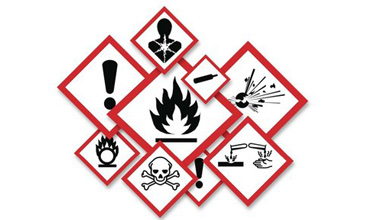Occupational Risk and Hazards related Nurses Working in Central Hospital Warri, Nigeria

Abstract:
Nursing is a risky and hazardous occupation in the
developing countries, but little is known about the occupational risk and hazards
facing the nursing work force in Nigeria. In this article, the purpose is to identify
some of the work-related risk and hazards among a sample of nurses in central hospital
warri. Cross-sectional data were collected through a self-administered survey in
the hospital facilities. 25 questionnaires was submitted, 22 Nurses returned theirs
(88%) Measures included four categories: work-related demographics, occupational
risk /illness, reporting behaviour, and safety awareness. From the study, the result
shows that Nurse who are not satisfy with the working conditions (working environment,
safety measures, staff shortage, etc), at the Hospital has 78.9%, Over 85% are faced
with extreme pressure at work, while 57.89% report any work-related health risk
and hazards to the hospital authorities, 80%, of the sample of nurses experienced
fatigue (temporal loss of strength and energy from hard physical/mental work. While
50% of Nurses experience low back pain and are regularly exposed to contagious pathogens/agent
the results also revealed that 70% of the nurses claim they work under unclean working
environments. 15% of nurses are exposed to radiation as stated in the data collected,
another 20 % have been involved in electrical shock accident. 85% of Nurses understand
their role in the safety and health management system, while 65% of nurses say that
the management team do not regularly inspect the hospital. Future research should
examine a factor which leads to risks and strengthen policies?
Keywords:
Risk, Nurses, hazards Ergonomics, Nigeria
References:
[1]. E. O. Orji, O. B. Fasubaa,
U. Onwudiegwu, F. O. Dare, and S. O. Ogunniyi, “Occupational health hazards among
Nurses and health care workers in an obstetrics and gynaecology unit of a Nigerian
teaching hospital,” Journal of Obstetrics
& Gynaecology, vol. 22, no. 1, pp. 75–78, 2002
[2]. J. A. Johansson, “Psychosocial work factors,
physical work load and associated musculoskeletal symptoms among home care workers.,” Scandinavian Journal of Psychology, vol. 36,
no. 2, pp. 113–129, 1995
[3]. P. K. Triolo, “Occupational health hazards
of hospital staff nurses. Part II: physical, chemical, and biological stressors,” AAOHN Journal, vol. 37, no. 7, pp. 274–279,
1989
[4]. R. M. Moore Jr. and R. G. Kaczmarek, “Occupational
hazards to Hospital Nurses: diverse, ill-defined, and not fully appreciated,” American Journal of Infection Control, vol.
18, no. 5, pp. 316–327, 1990
[5]. R. R. Rosa, “Extended workshifts and excessive
fatigue,” Journal of Sleep Research, vol.
4, supplement s2, pp. 51–56, 1995. Berland, G. K. Natvig, and D. Gundersen, “Patient
safety and job-related stress: a focus group study,” Intensive and Critical Care
Nursing, vol. 24, no. 2, pp. 90–97, 2008.
[6]. S. Vegso, L. Cantley, M. Slade et al.,
“Extended work hours and Occupational health risk of acute occupational injury:
a case-crossover study of workers in manufacturing,” American Journal of Industrial Medicine, vol.
50, no. 8, pp. 597–603, 2007.

